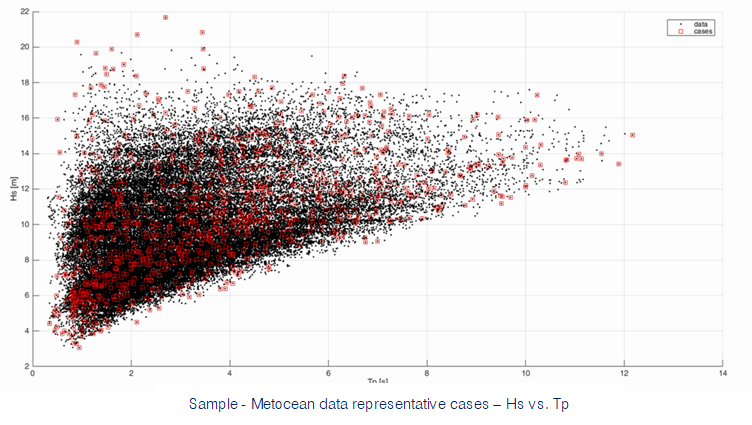Background
Intermoor Ltd needed to carry out an assessment of the potential contribution of OPB & IPB cyclic loading, in combination to cyclic tension, to the failure of a top chain link. In order to do so a 20-30 years’ long time series of representative concomitant combinations of wave, current and wind, addressing relative directionality, was required.
However a 30 year long, three hourly time series, has 87,600 records (load cases) and it is not possible to carry out the analysis on each load case. Therefore, a reduction of the number of cases, while keeping their representativeness was required.
Scope of Work
CA Metocean was appointed to provide metocean criteria at the interest location to support the required analysis.
The scope of work included:
- Retrieve regional hindcast of wave, wind and current information at the interest location
- Calibrate the wave and wind hindcasts by comparing them against co-located satellite measurements
- Creation of concomitant time series of sea states (Hs, Tp Dir), winds (Wind speed, direction) and surface total current (current speed and direction)
- Selection of 1,000 representative cases
Key Features
- The selection of the most representative sea states was performed by applying the maximum dissimilarity algorithm (MDA), which allows an automatic selection of a subset of timesteps that are representative of met-ocean climate at a location
- This algorithm was first described by Kennard and Stone (1969) and is widely applied in molecules in a high throughput screening in drug discovery (Snarey et al., 1997; Willet, 1996)
- The algorithm was implemented in a Matlab tool by CA Metocean, following description from Camus et al. (2011a).



